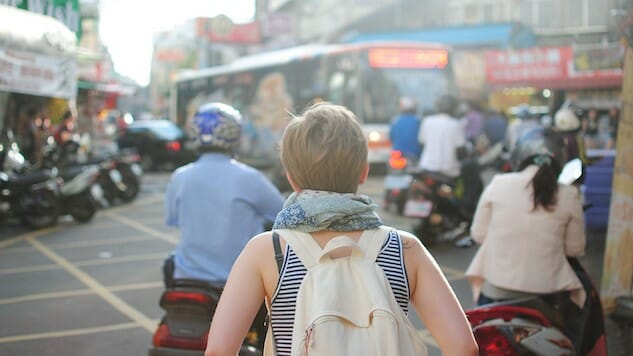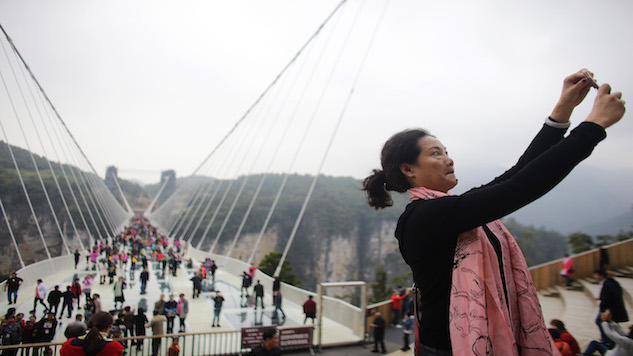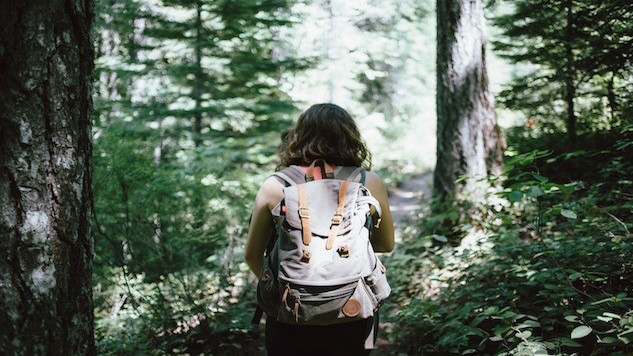7 Reasons We Need Travel Guidebooks and Apps for Women Now

Mexico’s Zipolite beach was advertised in an article as an expat-filled sandy 1960s utopia perched on the sunny Oaxacan Riviera. Picturing Joan Baez and John Lennon lookalikes sunning themselves on batik blankets, I booked a bus ticket from Oaxaca City to Zipolite and a room at the article’s recommended hotel.
But upon arrival, I found a strangely lonely beach and several men who persistently followed me around, offering drugs and demanding companionship. It was far from Shangri-La for a woman alone, and I began to wonder if travel books and articles, written mostly by men, failed to properly assist and prepare female travelers.
Women shouldn’t have to fear for their safety, or spend their vacation time searching for things specific to women ignored by their Lonely Planets and Rough Guides. In a brave new world where women are traveling just as much as men, we need to provide productive and thoughtful travel advice for women.
Women’s guidebooks would employ female writers to write both from personal experience and armed with statistics from studies. Women’s travel apps, meanwhile, would crowdsource from the hivemind of women who ardently love to travel. Rather than the Lonely Planet “Women Travellers” section, which spans only three paragraphs for an entire continent in my poor South America book, these guidebooks and apps would provide a wealth of information that would prepare women to get out there and joyfully travel, risks and all.
Here are the reasons why we need travel guidebooks and apps for women now.
1. Rape Culture
When my friend and I prepared to travel to South Korea together, I purchased the Lonely Planet Korea book and automatically turned to the buried back section in every Lonely Planet called “Women Travellers.” I always gasp-laugh when I see how short the section is, but for Korea, it says merely this: “Korea is a relatively crime-free country for all tourists, including women, but the usual precautions should be taken. Korea is a very male-dominated society, although it is becoming less so.” I’m guessing that Airdre Mattner, an Australian woman who was drugged, abducted and raped while on vacation in Seoul in September 2015, as well as any other survivors of rape (to give you an idea about average yearly statistics, 22,034 rapes were reported in 2011 in South Korea, according to the Korea Herald) would dispute the latter part of the second sentence after experiences with the police. VICE reported on police sexism regarding rape in South Korea, but my Lonely Planet had almost nothing to say that would’ve prepared me and my friend for how to deal with police or the system, or what the laws were. If you’re not an American with a powerful embassy to help you in that particular country, you have no other guidance. And according to these countries, you’re the criminal if you’re raped.
Rape laws vary widely across the world, as do the rape cultures that form the de facto laws that rule daily life. India, which has seen its rape rates go up in recent years, has implemented emergency helplines, resource cards at immigration entry points and GPS tracking systems in taxis, but has seen a politically conservative resurgence that has perpetuated rape culture. Furthermore, the problem of few private toilets has exacerbated the rape crisis in India, and would be an important factoid for female visitors to know, especially if they are considering doing volunteer work in areas where private toilets are rare. However, I have never seen a Lonely Planet or Rough Guides book do any of the following things: detail national rape laws, list hotline numbers, give pointers on how to deal with police, note how to say “I’ve been raped” and “I want a lawyer” in the native tongue, give the website of a nonprofit offering legal assistance, or provide resources to begin prosecuting or documenting a rape in that particular nation. “Just go to the embassy,” is the refrain, but embassies can be harder to get fast help from than you think.
2. Street Harassment
Guidebooks, in my experience, have utterly failed in regard to harassment, as well. “Don’t go to bars or nightclubs alone, for one—this is an activity only undertaken by the most brazen prostitutes in the region, and you will be considered fair game,” The Rough Guide to South America on a Budget informed me. Not only is the phrase “fair game” completely sexist, but many friends have told me that this is totally false in many areas. I also find the phrase “brazen prostitutes” to be insensitive in its framing of sex workers (the phrase “brazen hussy” rang through my ears). Why would I trust someone who writes this way, especially a man who has never experienced street harassment, on how I should conduct myself?
The following statement on harassment in the same book left me head-spinningly confused: “Don’t be sarcastic or scream if approached, as the man in question may feel that you are showing him up in front of his friends and get more macho and aggressive. However, don’t be afraid to seem rude; even the mildest polite response will be considered an indication of serious interest.” In other words, women are supposed to be rude and not even mildly polite, but are to be careful not to appear sarcastic (or they may be “fair game” … ?). Women are being told to toe the line, rather than how to travel boldly while taking calculated risks, which is what all travelers do.
-

-

-

-

-

-

-

-

-

-

-

-

-

-

-

-

-

-

-

-

-

-

-

-

-

-

-

-

-

-

-

-

-

-

-

-

-

-

-

-

 Photo by Wang He/Getty
Photo by Wang He/Getty








































